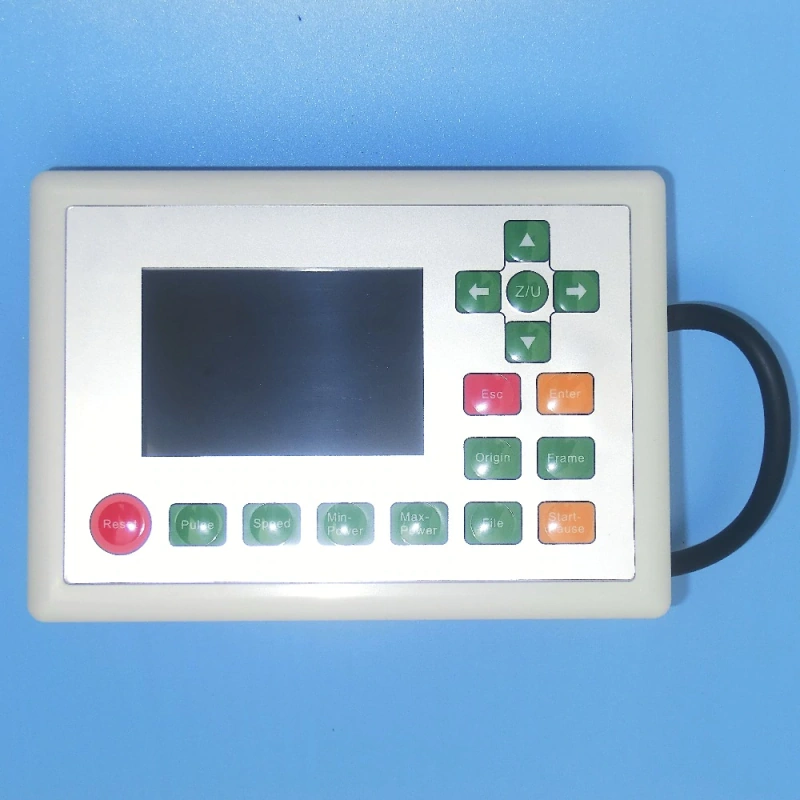The Concise RDWorks Learning Lab Series
Welcome to the new Concise RDWorks Learning Lab Series with Russ Sadler. In this session, Russ briefly discusses the workings of the Ruida controller and goes through the key aspects of a typical laser machine circuit diagram. There are a number of Ruida controllers but the 6442S and 6442G are two of the more common variants.
Over the last 6 years, Russ has built up a formidable YouTube following for his RDWorks Learning Lab series which currently has over 200 videos.
The original RDWorks Learning Lab series on his “Sarbar Multimedia” YouTube Channel, follows Russ as he tries to make sense of his new Chinese laser machine and to sort out the truths, half truths and outright misleading information that is available on the web.
Six years later with over 4 million YouTube Views under his belt, Russ has become the go to resource for everything related to the Chinese CO2 laser machine user or wannabe user.

In this new series, Russ has condensed his knowledge and experience of the last 6 years to provide valuable information and insights into the purchasing, understanding, use, repair and maintenance of the Chinese CO2 laser machines and their key component parts.
Podcast Download for the Ruida Controller in Brief
You can download the audio file for this video here, just click on the three dots to the right of the player:

Video Resource Files
Ruida Controller Manual
Possible Ruida Controller Passwords: RD8888 / rd8888 / HF8888 / hf8888 / CC8888 / cc8888. Make sure you have backups of your controller settings before using any of the above Ruida Controller passwords on your controller.
There are no more resource files associated with this video.

External Resource Links
There are no external resource links associated with this video.
Reset Ruida Controller
If you need to reset your Ruida Controller to it’s DEFAULT Parameters as defined by your Laser System Manufacturer. This is the procedure to follow:
- Back up your current files if not already done – This is a vital stage as not all Laser System Manufacturers will have loaded a default parameter file onto the controller and you may inadvertently revert to Factory Default. You can save the settings via RSWorks and LightBurn when your laser machine is connected to the software.
- Backup with RDWorks: Open RDWorks > File > Vendor Settings > Password: RD8888 > Read > Save > Filename.RDVSet.
- Backup with LightBurn: Open LightBurn > Edit > Machine Settings > Read > Save > Filename.lbset
- With the Laser machine switched on press Z/U
- Press Down Arrow to “Set Default Para” press <Enter>
- Use keypad to enter the Password: HF8888
- The controller will then beep and the message “Recover Success” will show.
- Press <Enter>
- Then reboot the controller by cycling the main power. Voilà, you now have a Reset Ruida controller!
Please Note: DO NOT carry out a Factory Parameters Reset!
Transcript for the Ruida Controller In Brief
Click the “Show More” button to reveal the transcript, and use your browsers Find function to search for specific sections of interest.
Disclaimer
Last updated August 26, 2021
WEBSITE DISCLAIMER
The information provided by n-Deavor Limited, trading as Laseruser.com (“we,” “us” , or “our”) on (the “Site”) is for general informational purposes only. All information on the Site is provided in good faith, however we make no representation or warranty of any kind, express or implied, regarding the accuracy, adequacy, validity, reliability, availability or completeness of any information on the Site.
UNDER NO CIRCUMSTANCE SHALL WE HAVE ANY LIABILITY TO YOU FOR ANY LOSS OR DAMAGE OF ANY KIND INCURRED AS A RESULT OF THE USE OF THE SITE OR RELIANCE ON ANY INFORMATION PROVIDED ON
THE SITE. YOUR USE OF THE SITE AND YOUR RELIANCE ON ANY INFORMATION ON THE SITE IS SOLELY AT YOUR OWN RISK.
EXTERNAL LINKS DISCLAIMER
The Site may contain (or you may be sent through the Site) links to other websites or content belonging to or originating from third parties or links to websites and features in banners or other advertising. Such external links are not investigated, monitored, or checked for accuracy, adequacy, validity, reliability, availability or completeness by us.
WE DO NOT WARRANT, ENDORSE, GUARANTEE, OR ASSUME RESPONSIBILITY FOR THE ACCURACY OR RELIABILITY OF ANY INFORMATION OFFERED BY THIRD-PARTY WEBSITES LINKED THROUGH THE SITE OR ANY WEBSITE OR FEATURE LINKED IN ANY BANNER OR OTHER ADVERTISING.
WE WILL NOT BE A PARTY TO OR IN ANY WAY BE RESPONSIBLE FOR MONITORING ANY TRANSACTION BETWEEN YOU AND THIRD-PARTY PROVIDERS OF PRODUCTS OR SERVICES.
AFFILIATES DISCLAIMER
The Site may contain links to affiliate websites, and we receive an affiliate commission for any purchases made by you on the affiliate website using such links. Our affiliates include the following:
- makeCNC who provide Downloadable Patterns, Software, Hardware and other content for Laser Cutters, CNC Routers, Plasma, WaterJets, CNC Milling Machines, and other Robotic Tools. They also provide Pattern Files in PDF format for Scroll Saw Users. They are known for their Friendly and Efficient Customer Service and have a comprehensive back catalogue as well as continually providing New Patterns and Content.
- Cloudray Laser: a world-leading laser parts and solutions provider, has established a whole series of laser product lines, range from CO2 engraving & cutting machine parts, fiber cutting machine parts and laser marking machine parts.
